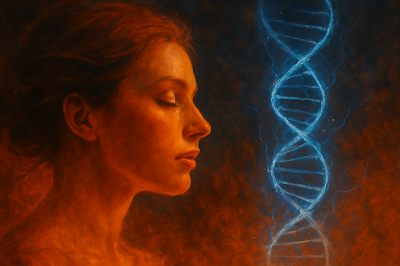How historical pay ratios shaped our culture of ambition, and how a 100:1 cap can restore it.
In America, we’ve spent decades arguing over the minimum wage. But the real imbalance isn’t at the bottom. It’s at the top.
Other nations have already tested this idea. In Switzerland, citizens voted on the 1:12 Initiative in 2013, which would have capped any CEO’s salary at twelve times that of their lowest-paid employee. It failed, but it reframed Europe’s debate on compensation. In Japan, corporate culture keeps executive pay naturally restrained—often around 30 - 50× an average worker’s pay—more by norm than by law. And in the United States, Portland, Oregon became the first city to tax pay inequality. Beginning in 2017, companies reporting CEO-to-median-worker pay ratios above 100:1 pay a 10% tax surcharge; above 250:1 pay 25%.
But 250:1 is still astronomical. It roughly matched national ratios from the mid-2010s; already deep into the inequality spiral. So while Portland made history, it didn’t make harmony. The gap here still feels like despair. Workers don’t sense civic pride; they feel underpaid and unseen. The moral gesture is there, but the ratio is too wide to heal the disconnect.
That’s why America needs to go further. Not a minimum wage debate. A maximum wage ratio: a simple rule tying the top to the bottom, so that success lifts everyone instead of leaving them behind. Not punishment, but proportion. Not equality of outcomes, but equality of belonging.
The right number isn’t 250:1, or even 150:1. It’s 100:1, which is the balance America had during its most ambitious, hopeful era, when work still meant possibility, and success still felt shared.
A Short History of Pay Ratios and Pop Culture
The story of wealth in America is really a story of vibe. How people felt about success, work, and reward.
| Era | Avg. CEO-to-Worker Ratio | Cultural Mood | Pop-Culture Snapshot |
|---|---|---|---|
| 1970s | ~30:1 | Blue-collar pride and suburban stability | 9 to 5, Rocky → Hard work = dignity |
| 1980s | ~50:1 | Wall Street excess, deregulation, MTV materialism | “Greed is good” → Wealth = glamour |
| 1990s | ~100:1 | Tech optimism, expanding opportunity | Hip-hop’s golden age, Office Space, Jerry Maguire → Hustle = hope |
| 2000s | 200:1+ | Housing bubble, debt addiction | “Keeping up with the Joneses” → Hustle = stress |
| 2010s | 300:1+ | Gig economy, burnout, inequality boom | “Grind culture,” irony → Work = survival |
The ’90s: The Balance Between Dream and Delusion
The late ’90s were the last time the American Dream still felt plausible. The economy was expanding, tech was unlocking new paths to wealth, and culture celebrated work not as punishment but as self-expression.
Hip-hop and pop culture glorified success, but also the struggle to get there. Think “Mo Money Mo Problems,” “Can’t Knock the Hustle.” Even films like Office Space and Jerry Maguire wrestled with meaning, not just money. It was a strange equilibrium: ambition with empathy. You could believe in hard work and fairness at the same time.
The 2000s: When Hustle Turned Hollow
By the early 2000s, that equilibrium broke. Tax cuts, deregulation, and corporate excess pushed ratios past 200:1. The grind became an obligation instead of a dream. “Work hard, play hard” turned into “Work nonstop, maybe survive.”
The 2008 crash sealed it. The wealthy bounced back fast; everyone else was told to tighten their belts. That’s when hustle culture stopped feeling inspirational and started feeling like gaslighting.
Why 100:1 Is the Sweet Spot
- Rewards innovation and leadership.
- Demands shared prosperity.
- Keeps success aspirational without becoming absurd.
If your lowest-paid worker earns $40,000, your highest earner can make up to $4 million. Plenty of room for ambition, comfort, and creativity.
But once pay passes 200 - 300:1, something spiritual collapses. People stop believing they live in the same system as their bosses. When that faith goes, so do motivation, trust, and pride.
Making It Real
- Corporate tax scaling. Lower rates for companies under 100:1; surcharges above it (tightening Portland’s model for real impact).
- Public disclosure. Every company publishes its pay ratio. Let consumers and investors decide what feels fair.
- Federal contracts. Only companies under 100:1 qualify for public funding or procurement.
- Bonus reform. Shift stock-based compensation toward long-term value shared with workers (profit-sharing, employee ownership, and retention dividends).
If you want a raise at the top, raise the floor first.
The New American Dream
We can keep the hustle: The drive, the creativity, the love of success; but we have to re-anchor it in fairness.
A maximum wage ratio isn’t anti-wealth. It’s pro-trust, pro-dignity, and pro-sustainability. It says: you can climb as high as you want, but the ladder has to stay attached to the ground.
The 1990s gave us the last version of the Dream that still felt real. Maybe it’s time we take that ratio—and that optimism—and build forward from there.
Note: Historical pay-ratio series from sources like EPI, AFL-CIO Executive Paywatch, and SEC pay-ratio disclosures. Portland’s surcharge effective 2017. Japanese ranges reflect widely reported corporate norms rather than statutory caps.



.png)
.png)




.png)

